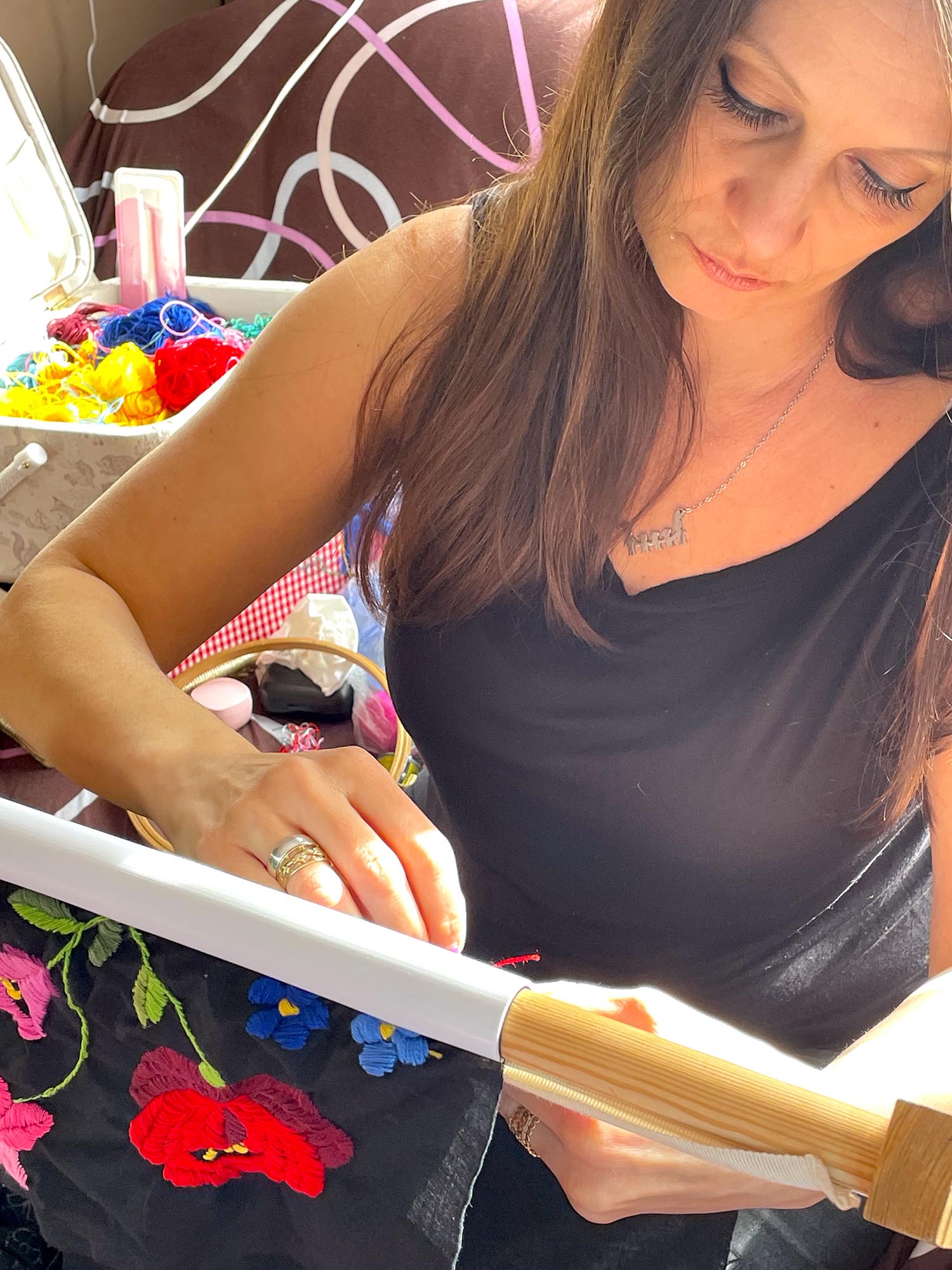History of Hungarian embroidery
 Embroidery has been around for a very, very long time! Even in ancient times, like when Egyptians and Romans lived, people were already using embroidery in different ways. Archaeologists found really old embroidered things from the 11th and 12th centuries. In Hungary, a lot of people started loving embroidery a lot in the 18th century.
Embroidery has been around for a very, very long time! Even in ancient times, like when Egyptians and Romans lived, people were already using embroidery in different ways. Archaeologists found really old embroidered things from the 11th and 12th centuries. In Hungary, a lot of people started loving embroidery a lot in the 18th century.
Creating embroideries is one of unique traditions of Hungary. People use colorful threads to decorate clothes, handkerchiefs, curtains, table runnersm doilies and tablecloths with special Hungarian patterns. Embroidery is when you sew threads onto fabric to make it look beautiful.
Kalocsa embroidery can be traced back to the 1860s. Before that, people really liked special embroidery with lace in rich families, and the fancy ladies wore it. They draw unique floral patterns (which later will be known as Kalocsa pattern) and made these embroideries. Women who worked on farms could embroider flowers they really liked both with hand and sewing machine. They didn't have a lot of money, so they made the patterns for bedsheets, pillowcases, and clothes by hand. Women who liked to draw used pens with purple ink and drew these patterns on fabric. They were often the wives or daughters of carpenters, who painted floral patterns on the furniture they made. This is how they learned to draw these special motifs. The history of painting furniture, making designs, and embroidery all mixed together, and the patterns and colors influenced each other.
The last two decades of the 19th century fundamentally changed Kalocsa embroidery by applying a new stitching technique. Craftswomen started to use new stitches to make wreaths and small bunches of flowers on tablecloths and wedding veils. They stopped using handwoven fabric and started using clothing fabric that was made in factories.
At first, the people in Kalocsa liked to keep things simple when they decorated. People used one thread and sewed patterns like catfish, hearts, grapes, and water droplets in a specific order. The early Kalocsa embroideries had only red, blue, and black flowers. Later on, the flowers got bigger, and homemade colors for the thread were used.
In the early 20th century, the number of colors and motifs increased significantly, and the size of the flowers grew. Threads were dyed with homemade methods left an interesting color palette for future generations. The clothing of the younger and older age groups became visibly distinct. The latter could only wear blue, purple, and green.
The social changes following World War I also left their mark on Kalocsa folk art.
The next generation of women and their daughters made the embroideries even more colorful. They used 32 different colors for the flowers. The threads they used kept the colors bright. They covered everything with big bunches of flowers. The women who drew the patterns dreamed of having lots and lots of flowers. On special days, the women wore dresses covered in flowers, making them and the environment look pretty. Unlike the old days when poor girls couldn't afford fancy embroidered clothes, now only rich farmers could make these beautiful dresses
Matyó embroidery is super famous and has been around for more than 200 years! It got even more popular in 1886. People who know a lot about art and even those who don’t, saw how special the embroidery was. Mezőkövesd, where the Matyo embroidery comes from, became really famous, not just in Hungary but also in other places. Matyó embroidery became so popular in 1911, when 400 women were working together in a big sewing place in Mezőkövesd to make enough for everyone who wanted it.
Palóc embroidery is a simple and easy kind of embroidery. People use mostly white and simple colors when they make it. They use this technique to decorate their clothes, curtains, and other things with flowers, plants, trees, and sometimes even animals. The most common thing they embroider is a rose with leaves.
We are collecting classic Hungarian vintage embroidery and making our own new patterns, mixing various colors.